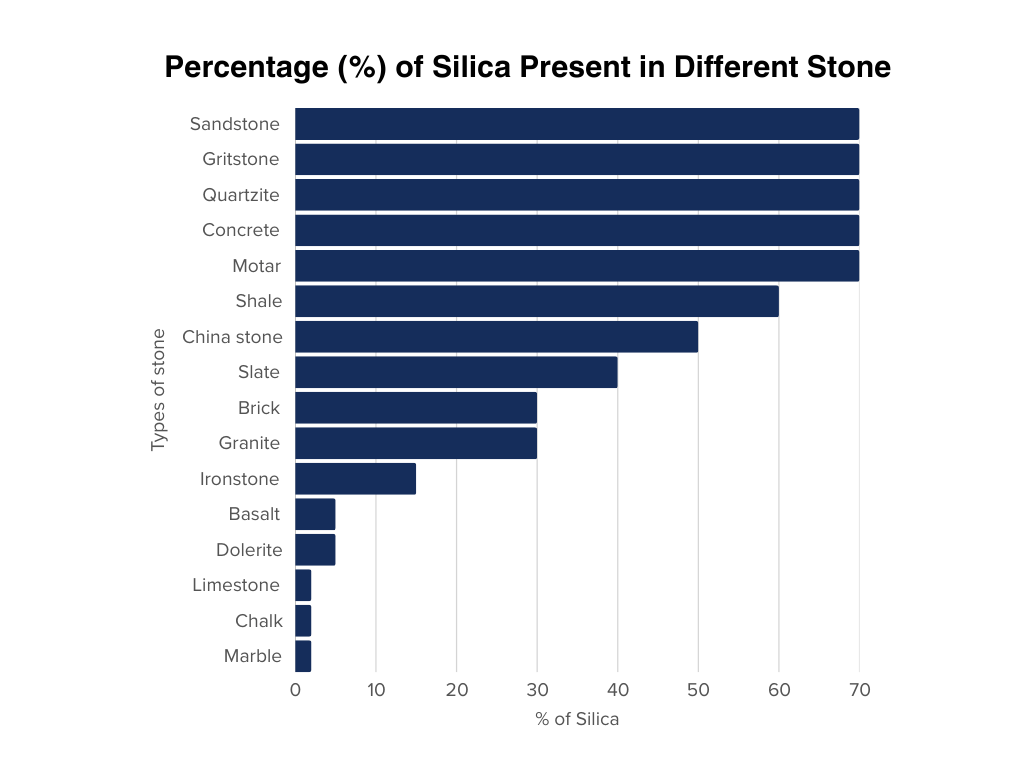Home »
News & Knowledge » Silicosarcoidosis: New Occupational Lung Disease Linked to Silica Exposure
Researchers at National Jewish Health and partners in Colorado, Illinois, Taiwan, and Israel have added the new term ‘Silicosarcoidosis’ to the medical language.

The term refers to patients showing characteristics of silicosis and sarcoidosis, severe pulmonary diseases. Caused by occupational exposure to respirable crystalline silica (RCS), commonly found in mining, construction, and engineered stone production.
The American Journal of Industrial Medicine published a ground-breaking study using lung biopsy to definitively characterize silicosarcoidosis, offering significant implications for occupational health policy and clinical treatment.
What is silicosarcoidosis?
The study examined 35 patients with proven sarcoidosis and long-term occupational lung disease exposure to RCS from Taiwan, Israel, and the United States.
The majority of these patients showed characteristic signs of both silicosis and sarcoidosis, according to lung tissue examination.
An increasing number of studies are connecting occupational and environmental exposures to sarcoidosis, a systemic inflammatory disease of uncertain cause. However, during clinical evaluation, exposure histories are rarely requested.
According to the study’s authors, the term “silicosarcoidosis” can assist closing this gap by recognising that exposure to silica is a substantial and modifiable risk factor for certain sarcoidosis patients.
Key findings from the study
A quantitative microscopy technique developed by Dr. Jeremy Hua, the study’s lead author and an occupational pulmonologist at National Jewish Health research team.
Measured significantly elevated dust particle densities in lung tissue, confirming the overabundance of workplace silica exposure compared to healthy controls.
Lung tissue samples from exposed workers revealed a significantly higher silica burden than in healthy controls.
The results showed that larger biopsy samples had a greater diagnostic yield, indicating that standard small lung tissue samples can overlook important signs of silica exposure.
Silicosis VS Sarcoidosis
Cecile Rose, MD, senior author of the study and occupational pulmonologist at National Jewish Health, stated, “This study brings much-needed clarity to the overlap between two complex lung diseases and reaffirms the critical role of an exposure history in pulmonary diagnosis.”
“The introduction of ‘silicosarcoidosis’ marks a pivotal step in considering both treatment approaches and preventive strategies, especially in pulmonary clinical practice.”
Legal rights for workers
Dr. Jeremy Hua, stated, “By coining the term silicosarcoidosis, we hope to improve identification and diagnosis of this under-recognized condition.”
“Our work underscores the need for clinicians to consider occupational exposures when evaluating patients with sarcoidosis-like lung disease, especially those in high-risk professions.”

Frequently asked questions:
What is Silicosis?
Silicosis (or Occupational Pulmonary Fibrosis) is a serious lung disease caused by the inhalation of fine silica dust, which is a mineral found in materials like sand, rock, and quartz.
Silica dust, commonly found in engineering stone workers, can cause inflammation and lung tissue scarring when inhaled over time.
This damage reduces the lungs’ ability to take in oxygen, causing symptoms such as coughing, shortness of breath, chest pain, and fatigue.
Silicosis is a progressive, incurable disease resulting from long-term exposure to silica dust, with three types: chronic, accelerated, and acute.
It is a type of pulmonary fibrosis, causing tissue damage and scarring, making it difficult for the lungs to function. Therefore, prevention through protective equipment and dust control measures is crucial.
What are the causes of Silicosis?
Many recent cases of silicosis have been diagnosed in stonemasonry workers, caused by prolonged inhalation of respirable crystalline silica dust, which is released when:
- Cutting
- Grinding
- Shaping stone materials such as sandstone, granite, and quartz.
Stonemasonry involves tasks that generate a significant amount of fine silica dust, especially when dry cutting or polishing stone.
Without proper protective measures, such as dust suppression systems, adequate ventilation, and the use of personal protective equipment (PPE) like respirators, this dust can become airborne and easily inhaled.
Can I treat Silicosis?
At present, there is no cure for Silicosis because lung damage cannot be reversed. However, there is treatment available to relieve symptoms and improve the quality of life. There is no cure for silicosis because the lung damage cannot be reversed. Treatment aims to relieve symptoms and improve the quality of life.
Long-term home oxygen therapy, bronchodilator medicines, and lung transplants may be offered for individuals with breathing difficulties, with strict health requirements requiring approval for severe cases.

When can I claim for Silicosis?
If you have been diagnosed with Silicosis and you believe it was caused as a result of failures/and or negligence in your current or former workplace, you may be entitled to claim compensation.
Employers have a legal duty to ensure employees are safe at work by providing adequate protective equipment, training, and safety practices.
- If you believe your employer failed to meet these requirements and, as a result, you have suffered harm, you may be entitled to compensation.
- If your Silicosis symptoms were initially mistaken for another condition or your diagnosis took an unnecessarily long time to confirm, you may also be able to make a claim for medical misdiagnosis or delay.
Silicosis Employer Liability Laws
As well as the common law duty to ensure a safe place of work and a safe system of work, your employer will have several duties set down by statute:
Health and Safety at Work Act 1974
- Employers have a duty, so far as is reasonably practicable, to ensure the safety and welfare of their employees.
Management of Health and Safety at Work Regulations 1999
- Duty to undertake a reasonable risk assessment (Reg. 3)
- Requirement to undertake a health surveillance (Reg. 6)
Personal Protective Equipment at Work Regulations 1992
- Ensure that suitable personal equipment is provided (Reg. 4)
- Ensure an assessment of any personal protective equipment is undertaken to determine whether it is suitable.
Control of Substances Hazardous to Health 2002
- Required to assess health risks where work is liable to expose employees to substances hazardous to health (Reg. 6)
- Ensure exposure to substances hazardous to health is either prevented or, where not reasonably practicable, adequately controlled (Reg. 7)
- Ensure any employee exposed to substances hazardous to health are monitored and under suitable health surveillance (Reg. 11)
If these are not met and, as a result, you have suffered harm, you may be entitled to compensation.
Further Information:
Silicosarcoidosis: Researchers coin new term to define distinct occupational lung disease.
Oakwood Solicitors Silicosis Claims.
HSE Silicosis.
WHAT TO DO NEXT
Individuals in mining, construction, and engineered stone production may be at risk of exhibiting symptoms of silicosis and sarcoidosis due to occupational exposure to respirable crystalline silica (RCS).
If you believe these symptoms apply to you, get in touch today for a no-obligation consultation. Choose one of the methods on the right-hand side of this page or call us on 0113 200 9720.
Liam Hill is a Solicitor and Deputy Head of the Industrial Disease Team, having trained and qualified at Oakwood Solicitors. Liam joined us in 2013 after successfully completing the Legal Practice C…
Will my employers know about my claim?
"Will my employers know?" I get asked this question many times when assessing new claims. The short answer, I’m afraid, is "Yes".
In order to process a claim we…
View







